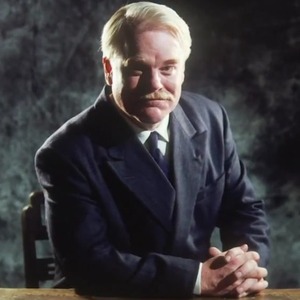In 1916, Susan Glaspell’s play Trifles was published. This drama depicts a woman, Mrs. Wright, who is being judged by people of her town for the strangulation of her husband, John Wright. Through the mythological strategy, I interpret this drama as Glaspell’s attempt to make an argument that men restrict women’s rights of freedom.
The first symbol that Susan Glaspell uses is the party telephone. Lewis Hale’s reason for visiting the Wright’s home after John Wright’s murder was to inquire about sharing the cost of the telephone service. Previously, Hale had asked Wright if he wanted to share the bill, and Wright was not interested. Hale thought that he would ask again with Mrs. Wright present, even though Hale “didn’t know as what his wife wanted made much difference to John” (1049).
This comes as a surprise to me. Mr. John Wright was not often home, but his wife was frequently home by herself with no children. The idea that Wright was not enthusiastic about having a party telephone for his wife to connect with other people makes me assume that Wright did not want her to communicate with others. Wright’s reasoning for this is unclear to me, but he could have denied the party phone for several reasons: perhaps he did not want her to have friends whom he considered a distraction from the work she needed to have done; he did not want her to talk to other men; or he may have envied her ability to work just on her sewing.
The next symbol that Susan Glaspell uses to make her argument is the kitchen. There are five different characters throughout the entire play. Three men, George Henderson; the county attorney; Henry Peters, the sheriff; Lewis Hale, the Wrights’ neighbor; and two women: Mrs. Peters and Mrs. Hale. While all of these characters were in the kitchen, George Henderson states that Mrs. Wright “wasn’t much of a housekeeper,” referring to the kitchen that was left a mess (1051). Mrs. Hale defends Mrs. Wright by telling the man that there is much work to be done on a farm (1051). The fact that the men seemed more interested in how Mrs. Wright kept her house when they were looking for evidence to convict her makes me believe that Glaspell is supporting her argument through this symbol.
In addition, Susan Glaspell uses a quilt as a symbol to further reinforce her argument. Before the murder of her husband occurred, Mrs. Wright was making a quilt. Mrs. Hale notices that the quilt was a log cabin pattern (1053). The log cabin pattern is significant because it suggests a notion of restriction and emptiness. There is no evidence that the cabin is warm and comfortable, so the quilt personifies the restriction and negativity in their marital relationship.
Also, Mrs. Hale asks Mrs. Peters if Mrs. Wright intended to quilt or knot the blanket (1053). I feel that this is humorous and an important part of the story because Mrs. Wright is suspected to have used a knotted rope to kill her husband. As Mrs. Hale was asking her question, the men overhear her and laugh at her interest of whether or not the blanket would be knotted or quilted. At the very end of the play, the county attorney states that at least the women found that Mrs. Wright was not going to quilt it, and he asks the women what the correct term was. Mrs. Hale answers, “We call it – knot it” (1057). Glaspell uses this black humor to end the play, underscoring the ambiguity of the knotting in the quilt and Mrs. Wright “knotting” her husband’s neck.
Finally, the most significant symbol is the bird. While Mrs. Hale and Mrs. Peters were downstairs without the men, they go through Mrs. Wright’s sewing basket and find a dead bird wrapped in silk (1055). The women see that the bird had been strangled by a rope around its neck. Mrs. Hale states that Mr. Wright would not want to have a bird in the house because he disliked singing. Mrs. Wright, or Minnie as she was known then, was in the choir in her younger years and others enjoyed her voice. Mrs. Hale went on to say that Mr. Wright “killed his wife’s singing” (1055).
I enjoy this symbol greatly because one could argue both ways as to who did this to the bird. Mr. Wright may have wrung the bird’s neck just as he stifled his wife’s singing, and this could be a motive for Mrs. Wright’s retaliation against him. Or, Mrs. Wright might have killed the bird in hostile jealousy that the bird was free to sing and she was not since Mr. Wright did not like the sound of music in his house. This is a very interesting symbol that makes the audience wonder.
Overall, I enjoy Susan Glaspell’s use of symbols to support her argument that men restrict the rights of women. The author uses the party telephone, kitchen, quilt and bird as symbols to show how Mr. Wright restricted his wife: Mrs. Wright is forced to keep to herself because of her husband’s choice not to have a phone; her kitchen is criticized by men who should be worried about her husband’s death; the quilt that Mrs. Wright was making was in a log cabin pattern which symbolizes restriction, and the two women find a strangled bird in Mrs. Wright’s sewing box. These symbols assist the author in winning the argument that men restrict women’s freedom.
Works Cited
Glaspell, Susan. Trifles. The Compact Bedford Introduction to Literature. 8th ed. Michael Meyer. Boston: Bedford/St. Martin’s, 2009.1047-57.


